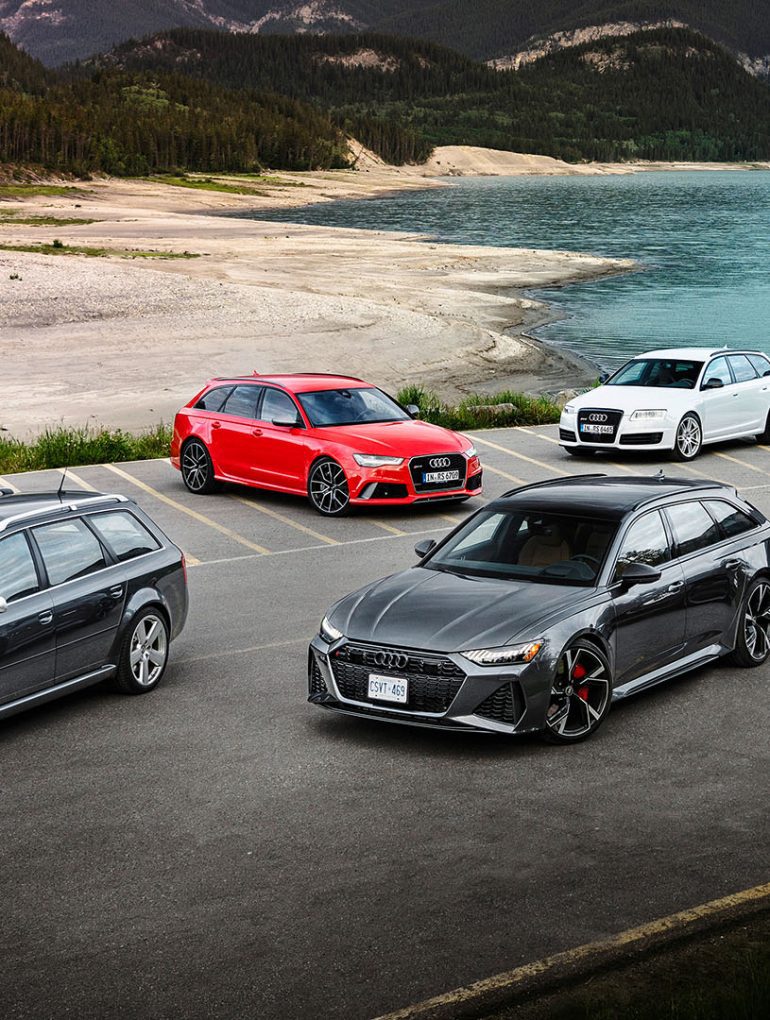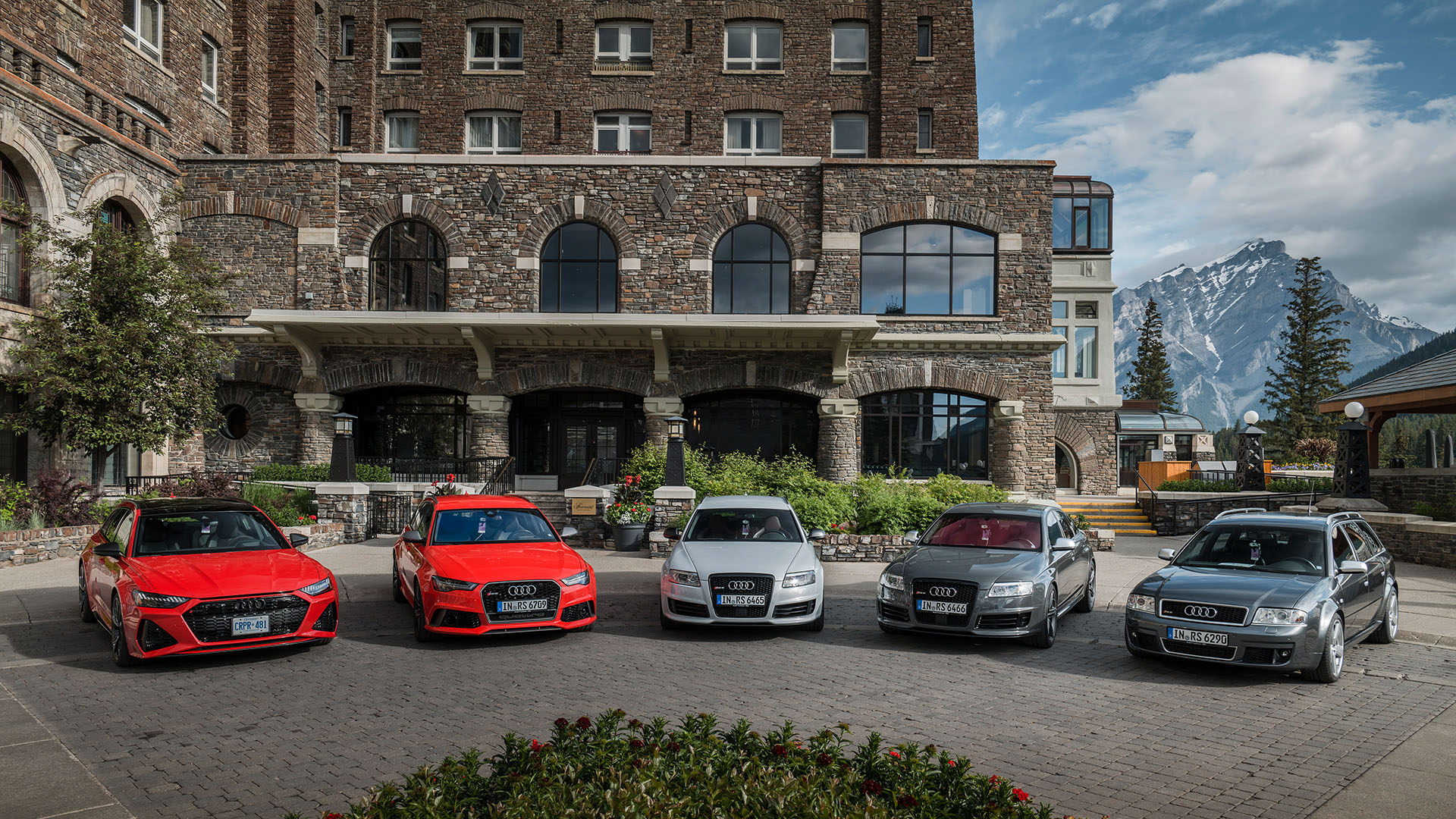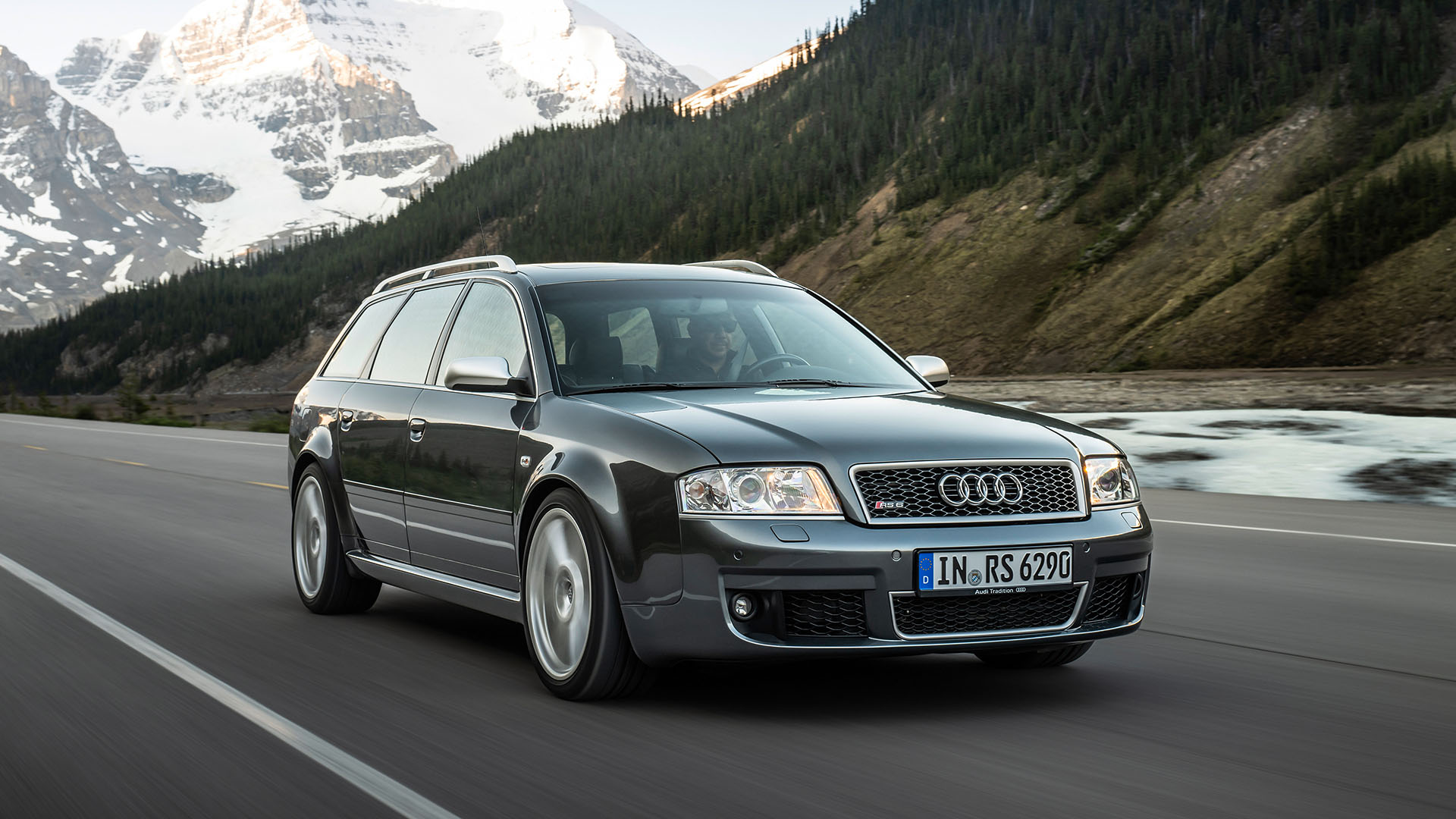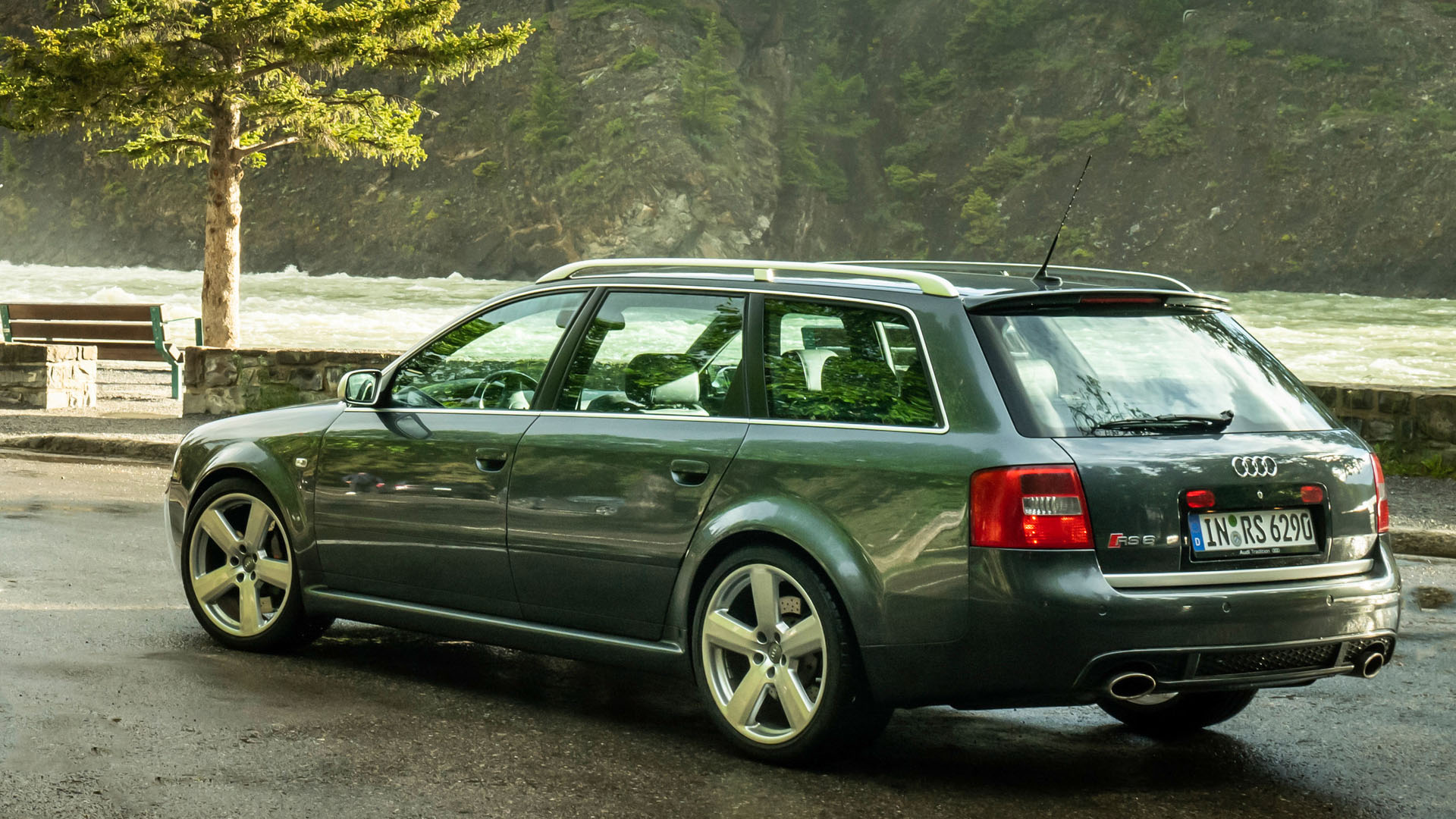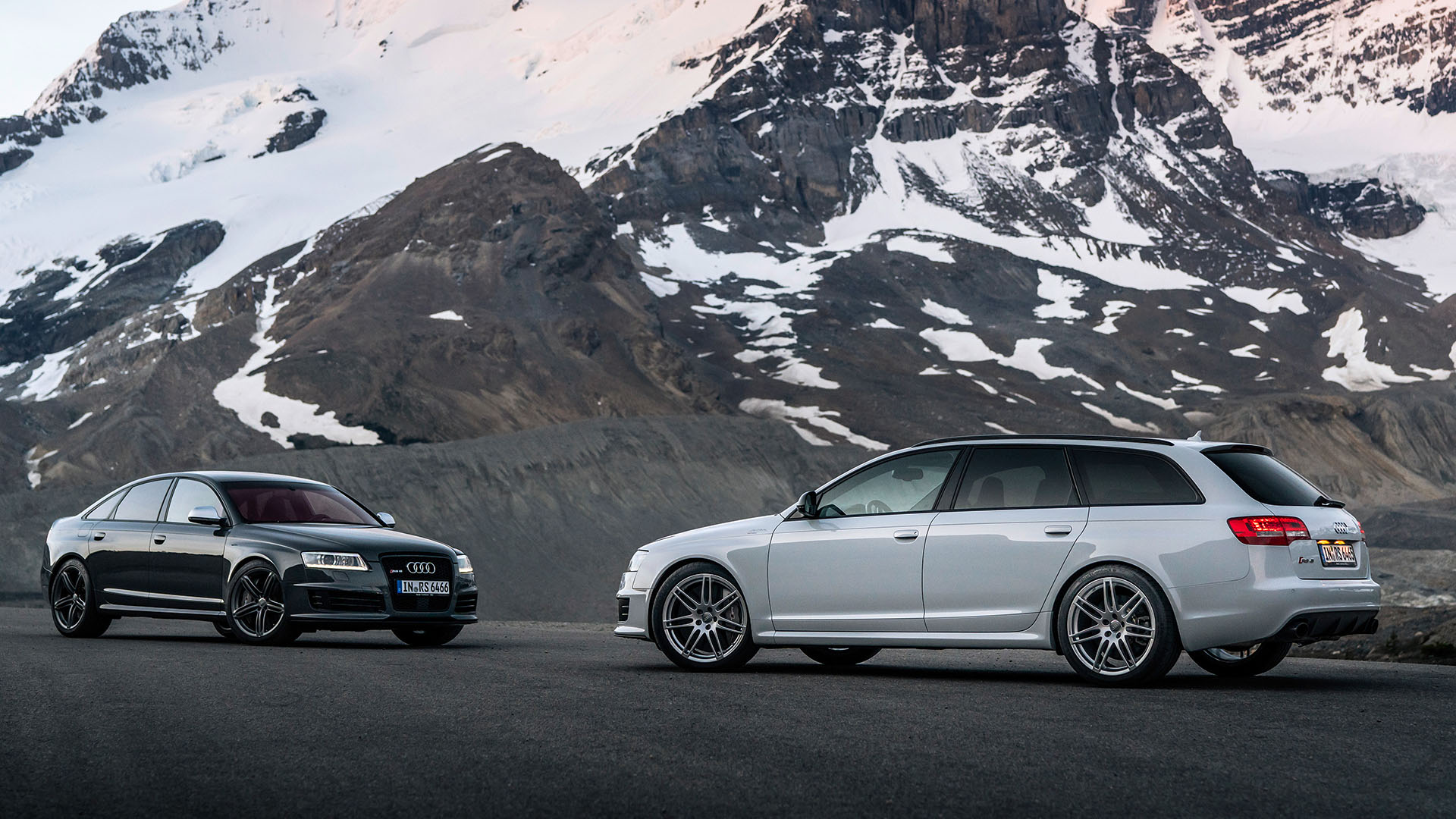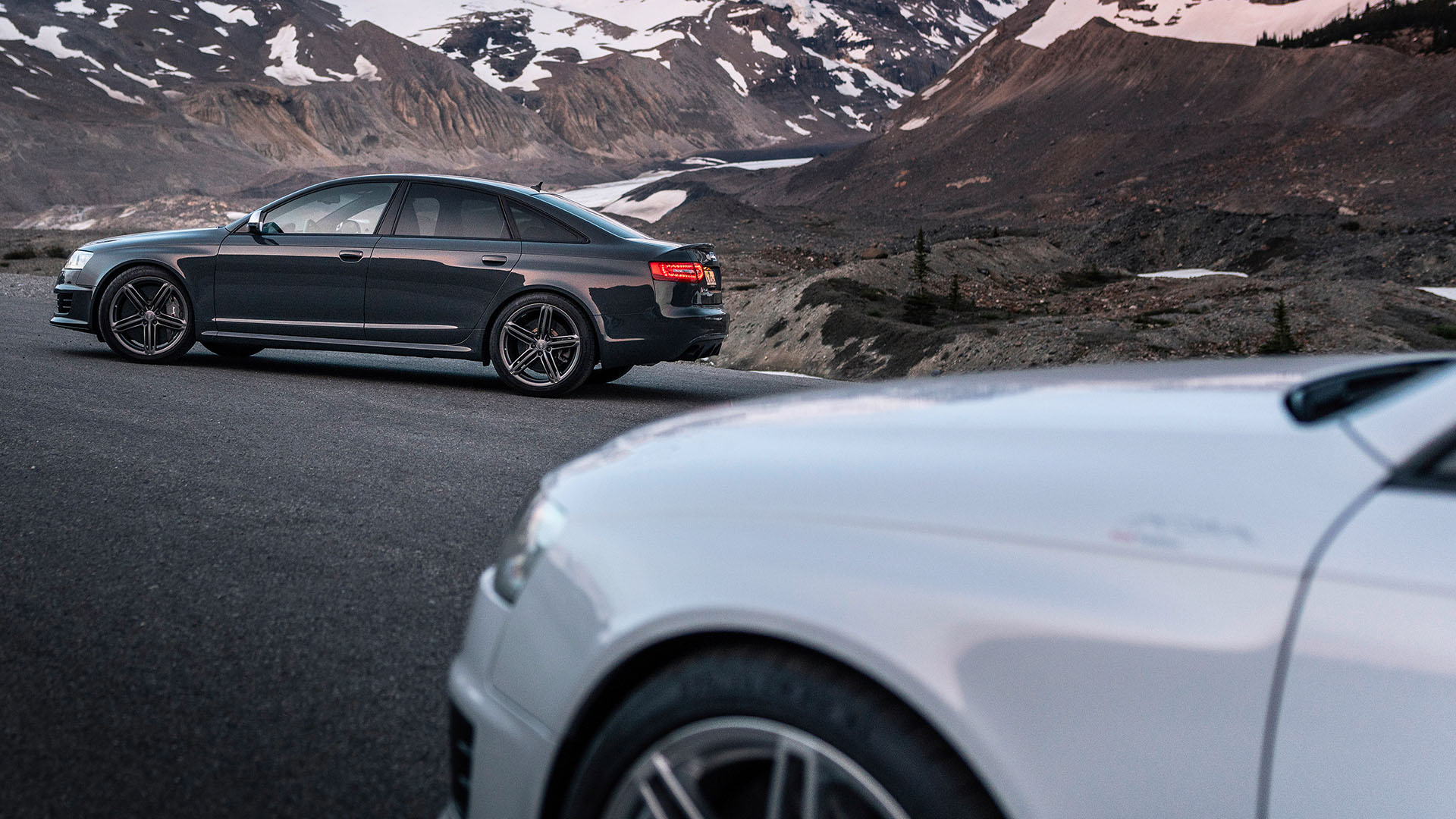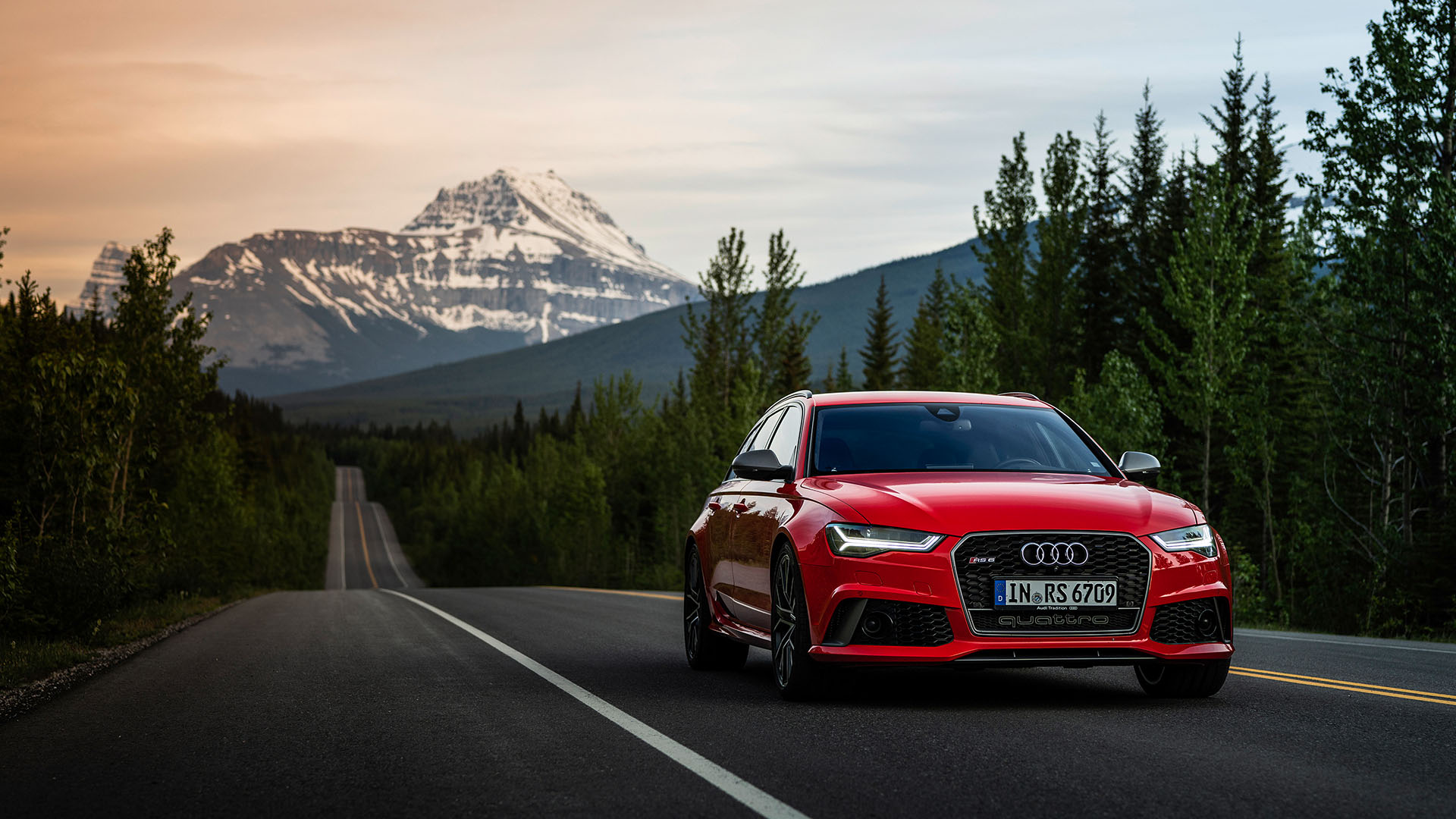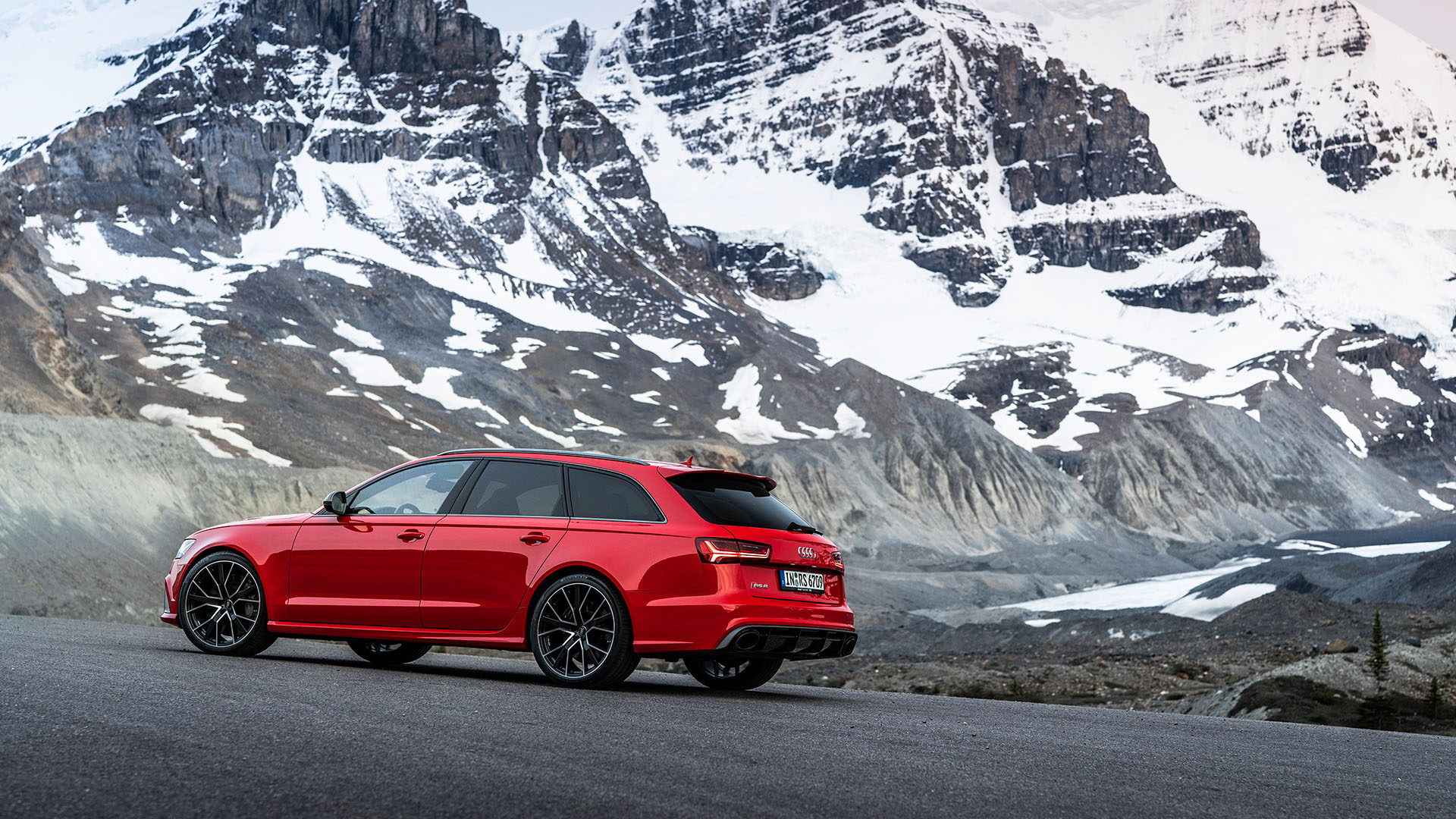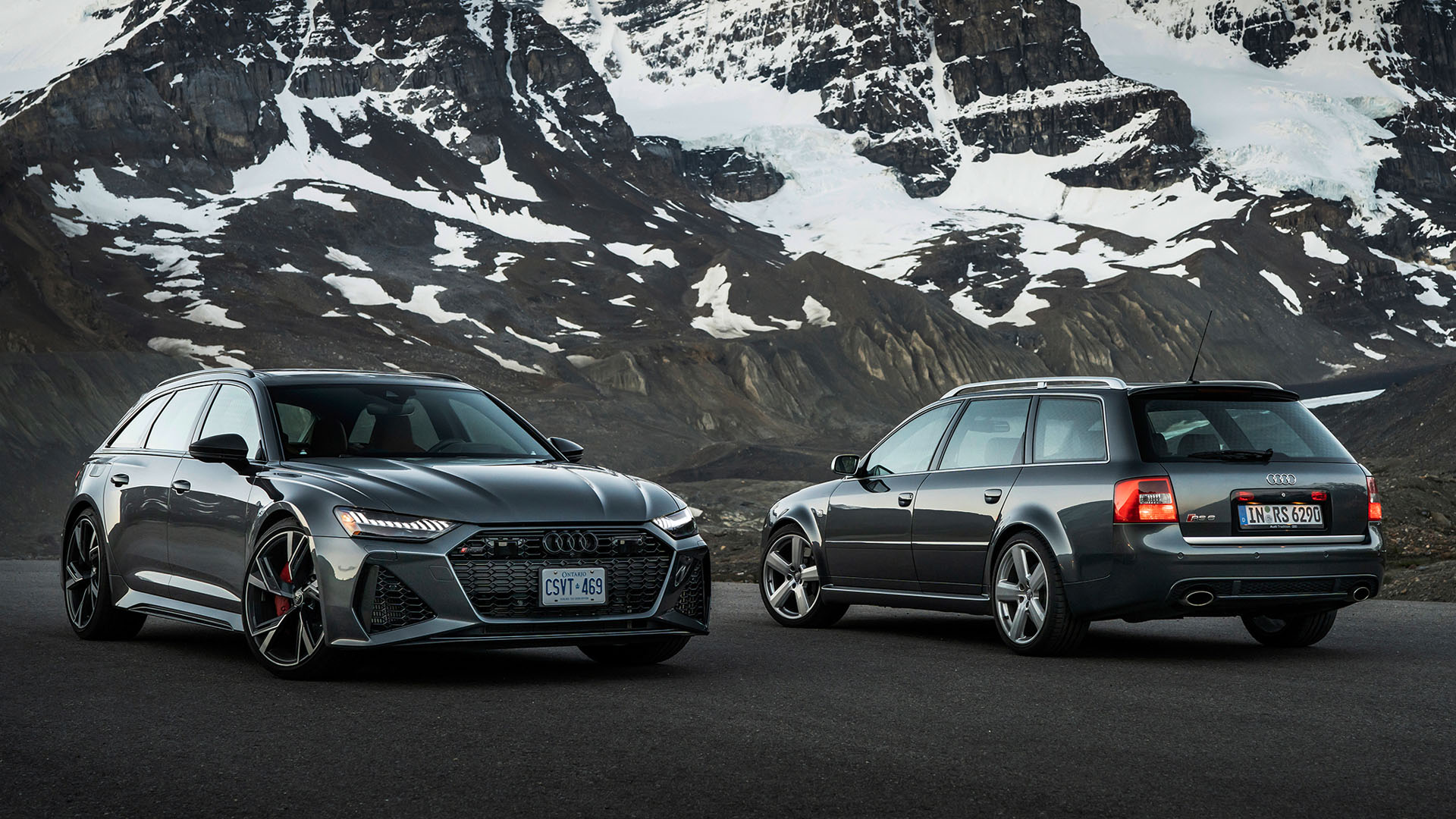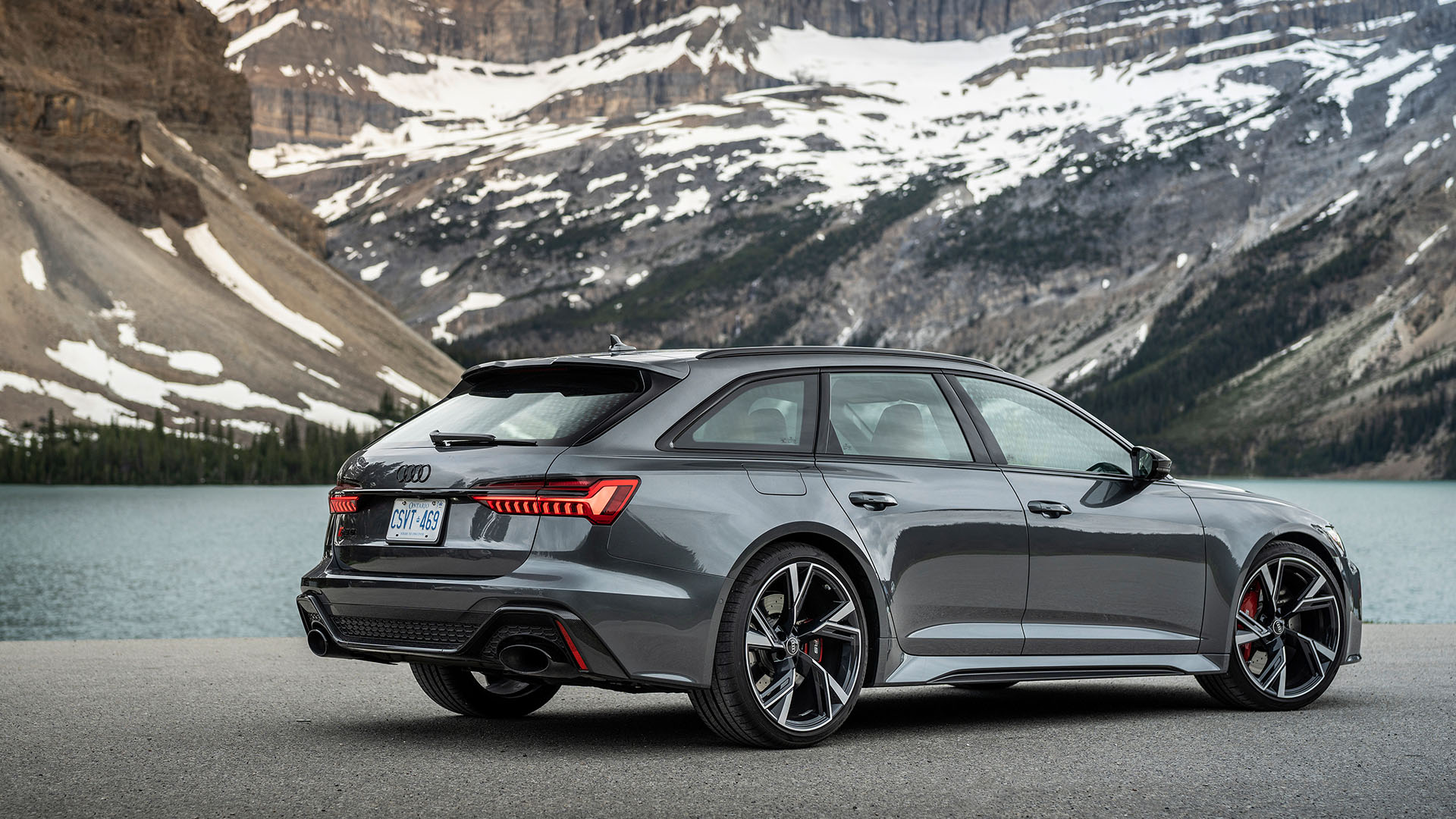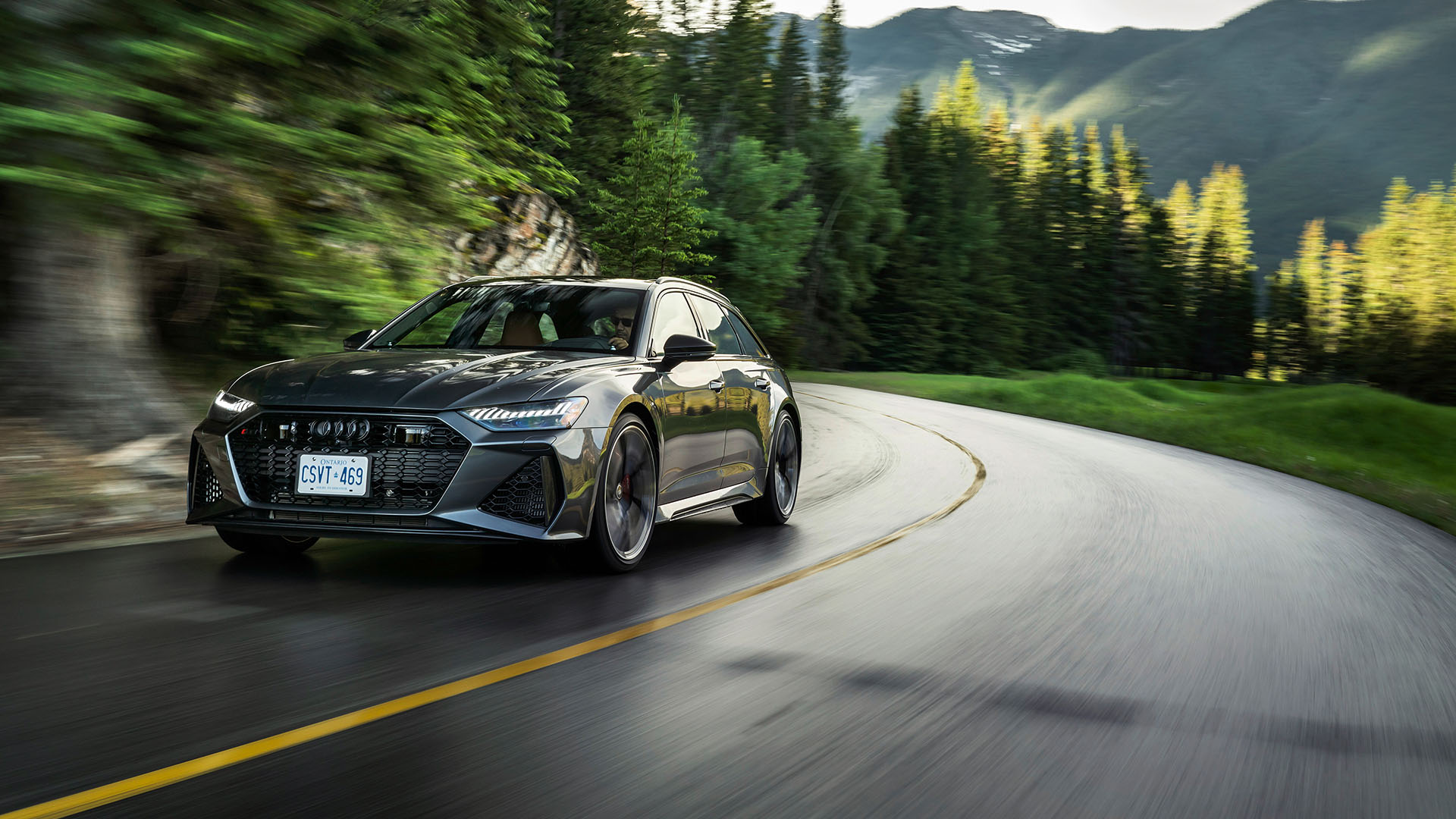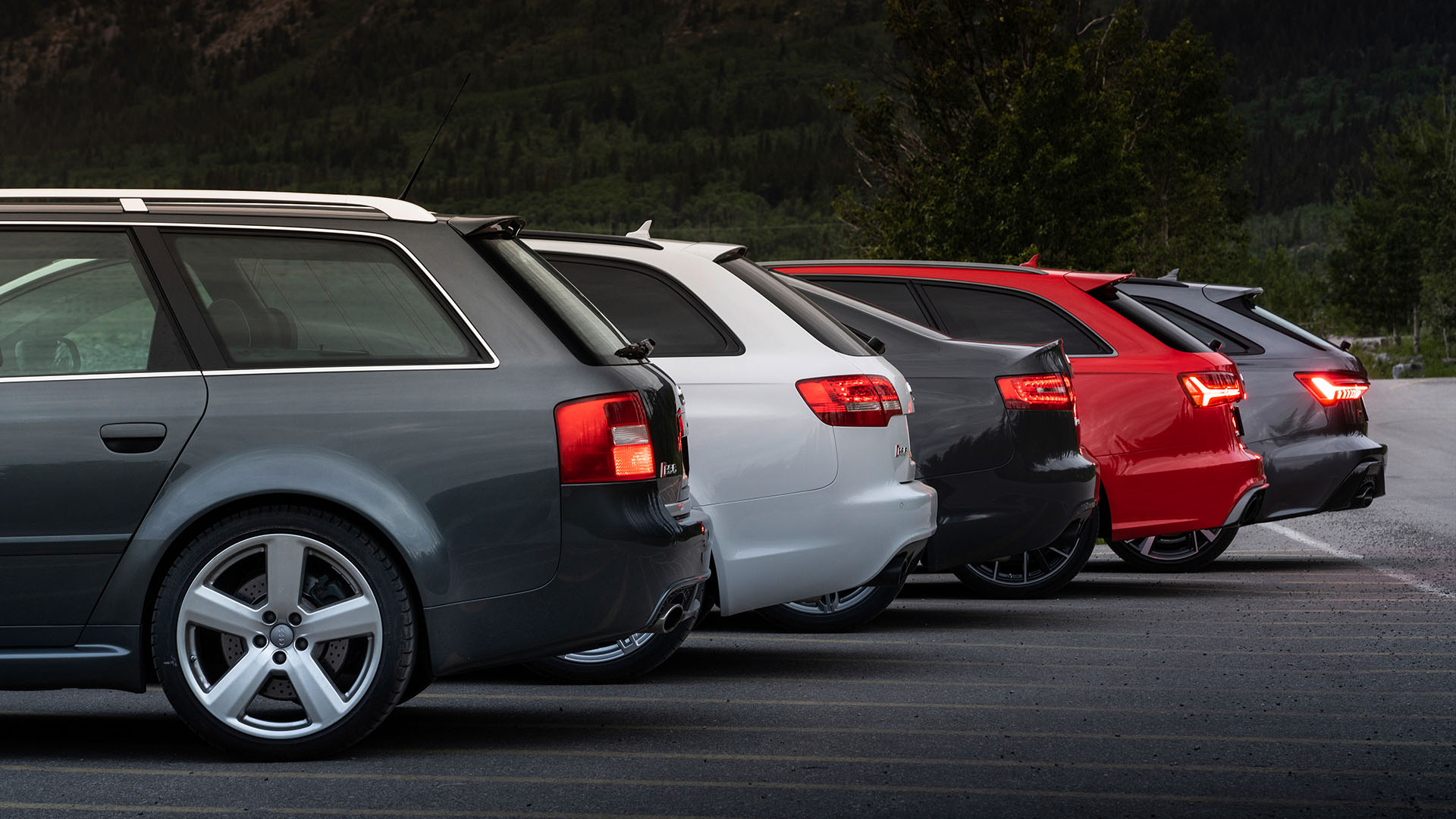In 2002 we had quattro GmbH, which would later be called Audi Sport GmbH. They created a masterpiece now 20 years ago, the Audi RS6 based on the C5, a performance car in the upper mid-range, as a successor to the Audi RS4, the Audi engineers at quattro GmbH put a great deal of effort into making the A6 a sportscar, that meant not only adapting the engine, suspension, and transmission, but also a shift in appearance to a higher gear: it grew four centimeters (1.6 in) in both length and width, adding new skirts, wider sills, a spoiler for the Avant, a distinctive breakaway edge for the Sedan, 18” or 19” wheels, and two oval tailpipes emphasized its sporty ambitions, it would become the start of a two-decade journey over multiple generations.
The 2002 C5 Audi RS6
The base C5 had the get a 4 cm extension at the front to be able to fit the massive 4.2-Liter, twin-turbocharged V8 engine in the A6, and while the engine was derived from the V8 seen in the Audi A8, the fine-tuning was done by Cosworth in the UK, which at the time was a subsidiary of quattro GmbH … the result was a total power output of 450 PS and a massive 560 Nm of torque, this also meant the manual transmission was gone, in its place came a torque-converter transmission that offered extremely fast shifting times, acceleration from 0 to 100 km/h (62 mph) was achieved in just 4.5 seconds, in a family saloon, or estate, whichever option you preferred, as at this time you could get a regular four-door body style on the Audi RS6.
These first-generation RS 6 vehicles in the C5 series were built on the regular production line in Neckarsulm next to basic diesel cars, but once somewhat driveable, the car would be taken away from the line and sent to an adjacent hall where quattro GmbH employees would spend another 15 hours per car to fit the filled suspension, the RS-specific components, and individual decor elements in the interior, more importantly, the C5 is still the only RS 6 that is also a racing car from the start. The RS 6 Competition, which Champion Racing uses, outperformed its competitors with equal displacement in the 2003 SPEED GT World Challenge with Randy Pobst at the wheel. The V8 biturbo offered 475 PS, had a manual shift, and won on its first attempt.
As a swansong, there was an Audi RS6 Plus which came with 30 more PS for a total of 480 PS, the top speed was raised from 250 km/h (155 mph) to 280 km/h (174 mph) and many of the available options became standard, which is usually the case when a successor is just around the corner, so clients are enticed to buy the ‘old’ model to clear out remaining stocks.
The 2008 C6 Audi RS6
When the second-generation Audi A6 went through the RS treatment to become the RS6, things changed considerably, not only did we get a V10 engine this time, but with an enlarged displacement too, power output went up to an insane 580 PS and 650 Nm of torque to match, even the Audi R8 GT supercar only came with 560 PS at that time!
Stephan Reil remembers well how systematic the Audi developers were in their use of every centimeter of installation space: “With its two turbochargers and manifolds, the V10 already looks like a work of art. And it’s powerful. I don’t know of any engine compartment that is filled better than the one in the RS 6 C6.”
With all those figures came some impressive performance, a top speed of 303 Km/h (188 mph) was possible in the Audi RS6 Plus, the ‘regular’ Audi RS6 was electronically limited at 250 Km/h (155 mph) but you could have an option to raise this to 280 km/h (174 mph), available both as a sedan and as an estate, the sedan took 4.5 seconds to reach 100 km/h from a standstill while the Avant (or estate) took 0.1 seconds longer, while for the first time ever you could have optionally available carbon ceramic brakes on this family supercar.
For its finale, the C6 ended as a RS 6 plus Sport or a RS 6 plus Audi Exclusive, a total of 500 limited vehicles rolled out of the plant in Neckarsulm, all with a numbered badge on the interior, special alloy wheels with a five-spoke design, leather on the instrument panel, and floor mats with the RS 6 logo.
The 2013 C7 Audi RS6
There is a saying ‘there is no substitute for cubic inch’, but it seems that didn’t quite make it to Germany when it was time to succeed the C6 RS6, as Audi decided to ditch two cylinders and reduce the capacity of the engine back to 4-liters, making it the smallest engine yet for the Audi RS6, and to make things worse, they also only offered an RS6 Avant now, no more sedan with this glorious engine, however, there was now an Audi RS7 Sportback available, and even with fewer cylinders and less displacement, the C7 RS6 left her predecessors far behind.
Thanks to some serious weight reduction, the 20 PS loss of total power was more than counteracted by the loss of 120 kg (265 lbs), the increase of torque to a healthy 700 Nm did help too, together with a new, 8-speed Tiptronic transmission the C7 Audi RS6 Avant made it to 100 km/h from a standstill in just 3.9 seconds, that is 0.7 seconds faster than the previous generation, and even the top speed went slightly up, to 305 km/h (190 mph), and all of this madness even came with a 30% lower fuel consumption, because this model came with cylinder deactivation, making this a four-cylinder car when less power was required for city driving or the school run … except when you’re running late that is.
To make sure this generation of the Audi RS6 was both fast and practical, some unseen options became available, like a trailer hitch for instance, but this new RS 6 C7 still stood apart from its predecessors in just about every area, be it the drive system, suspension, comfort, or efficiency, but it still had one thing in common with the previous generations: the C7 also switched halls during assembly in Neckarsulm to become a quattro hand-built car, and Audi never stopped developing this car further, by the end of the production cycle, the Audi RS6 Performance came with 605 PS and a massive 750 Nm of torque was possible with the overboost function, despite fewer cylinders and reduced power, the C7 RS 6 would become a bestseller and market leader in this segment.
The 2019 Audi RS6
The fourth generation, or C8, Audi RS6 retained the 4-Liter biturbo engine, but now with 600 PS and an even wilder 800 Nm of torque, and thanks to a 48V mild hybrid system, acceleration is a mind-blowing 3.6 seconds from 0 to 100 km/h (62 mph), and just 12 seconds to reach the 200 km/h mark, this generation also introduced all-wheel steering on the RS6, and for the first time in RS6 history, you will recognize this model from its ‘lesser’ siblings in the blink of an eye.
While the three previous generations only came with mild modifications from the base car, making them sometimes difficult to distinguish for those not in the know, this C8-based model doesn’t hide her purpose, in fact, only the roof, the front doors, and the tailgate are the only items taken from the base C8, everything else is bespoke for the RS, even the front hood, and make no mistake, the Audi RS6 is a massive 8 cm (3.15 in) wider than the standard A6 Avant, the RS6 comes with the Matrix LED Headlights with laser lights from the RS 7 and 21-inch wheels are standard, with even larger 22-inch units available as an option.
Today quattro GmbH has been renamed Audi Sport GmbH, but unlike the previous Audi RS6 models, this new C8 is manufactured at the assembly line at Neckarsulm, without shifting to a different hall, in response to high demand, the C8 is available in the US for the first time as the RS 6 Avant, this new RS 6 C8 is definitively evolving from a niche car into a success story that is in demand around the world.
It has been 20 years in the making, and the evolution from the first Audi RS6 in 2002 to the current C8 derivative has been a big one, but they all have one thing in common, the Audi RS6 is a high-power, spacious family car that can get you where you are going in a hurry, and I would love to own one as a daily driver.


